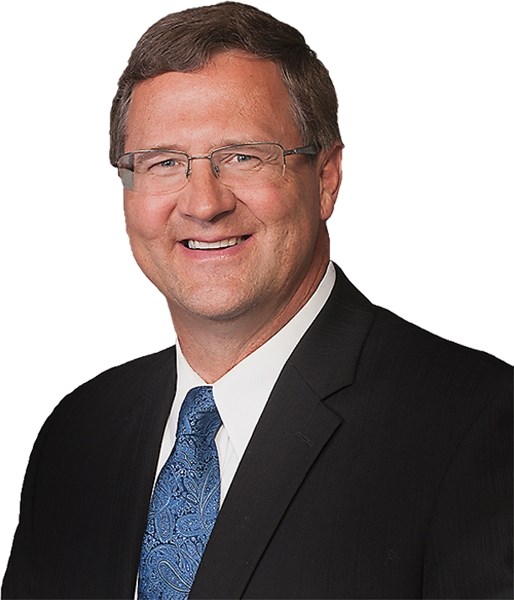No changes will be made to the Barrhead-Morinville-Westlock constituency boundaries as recommended by the Alberta Electoral Boundaries Commission (ABEBC).
On May 25, ABEBC released its interim report resulting from public consultations conducted back in January and February of this year.
The interim report recommended that no changes be made to the electoral division, as the constituency’s population of 44,793 was four per cent below the provincial average.
This difference, the report stated, would allow room for the Town of Morinville to grow.
Barrhead-Morinville-Westlock MLA Glenn van Dijken said he was happy with riding and how it is set up, but would not have wanted it to grow any larger.
“I feel that I’ve been able to get around the riding fairly effectively,” he said. “It takes a lot of travel time...Essentially we have to tell one group we can’t make it there that day because we’re going to be on the southern end or the northern end of the riding.”
As well, he noted that rural constituencies face issues with size that urbans don’t. van Dijken pointed out that while an urban electoral riding may cover one or two school divisions with a handful of trustees and one municipality, rural divisions include towns, counties, summer villages and several school boards.
That is also problematic on the municipality’s side. In Sturgeon County, three constituencies overlap and so the county has to work with three MLAs. The county had requested it become a single and separate electoral division but the commission did not accept that in the report.
Morinville also expressed concerns with the boundary and had requested to move into the same constituency as St. Albert, one of the reasons being the common francophone heritage.
However, the report said the move would not be possible due to the large populations in both municipalities.
The interim report is not set in stone and Albertans can submit feedback until July 8. A final report will be submitted to the Legislature in October.
Large constituencies
The province mandates the commission to update electoral boundaries every eight to 10 years based on population changes.
According to the 2016 Statistics Canada census released Feb. 8, Alberta’s population grew by 400,000 to 4.07 million people in the last five years. Each of Alberta’s 87 constituencies contains roughly 49,000 people but population can vary by 25 per cent with appropriate reasons.
However van Dijken said the commission could have put more consideration into that range, instead of sticking with a 10 per cent difference from the provincial average — 71 out of 87 electoral divisions will be within 10 per cent — which he said was too restrictive.
“To have an urban riding 25 per cent above the average of the Alberta population, to me you can still get very effective representation with that guideline,” he noted. “I believe that there’s many cases where even 25-per-cent below (in rural ridings) becomes difficult to have effective representation and for the MLA to be able to get to all of the different meetings happening within their riding.”
In particular, he said he was concerned with the large changes to electoral boundaries in some of the rural ridings, like Drayton Valley-Rocky Mountain House, which now extends to Sundre in the south.
“Mine is already fairly large, but then I start to look at what they’ve done in Athabasca, which lands up with Fort McMurray and Lac La Biche, that becomes a very large travelling distance for any MLA that’s got to represent that entire area.”
The same goes for constituents seeking to travel to their MLA’s constituency office. In contrast, he said MLAs of urban ridings might only take 15 minutes to travel across their electoral division.
“I’m not sure we’re doing justice for all of those people living in those regions to have an MLA with limited ability to come to participate in events in those different ridings. One of the biggest parts of our job is to be able to attend events and meet face to face with people at these community events.”
Effective representation
The Official Opposition came out with a statement May 25 in support of ABEBC commission member Gwen May’s minority report.
The document, which is contained within the commission’s report, states that electoral boundaries should be based on effective representation rather than equal representation. That is, factors like geography and common interests hold greater sway in determining a constituency over the population size.
“In order for MLAs to be responsive to their constituents, there must be an acknowledgement of the geographic constraints of our province, and not simply lump together communities for the sake of making population requirements add up,” Wildrose Shadow Democracy and Accountability Minister Nathan Cooper stated in the release.
van Dijken agreed that different criteria is necessary for effective representation.
“I think when you draw boundaries based on, ‘well you’ve got to get the right number of people in there,’ it makes it difficult for effective representation of say a group of people, whether it’s largely agricultural or whether it’s largely urban or whether its largely tourism.”
In the case of Barrhead-Morinville-Westlock, he said he believes agriculture is a common thread across the division.
“The Town of Morinville is a little bit different in the riding. It’s a little bit more urban, bedroom community, a little bit of military, but for the most part I believe I’ve got a good handle on being able to represent effectively the concerns of our constituency.”



